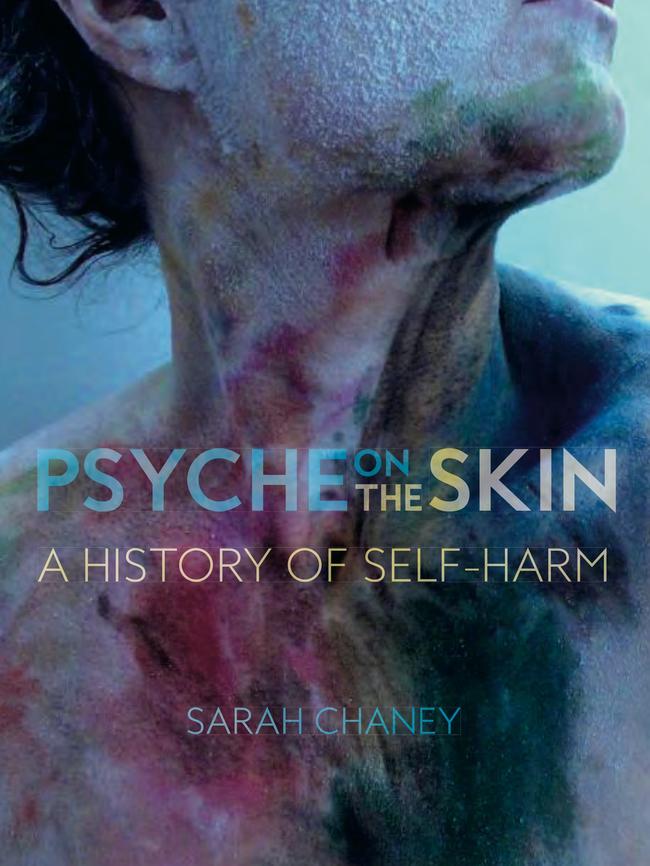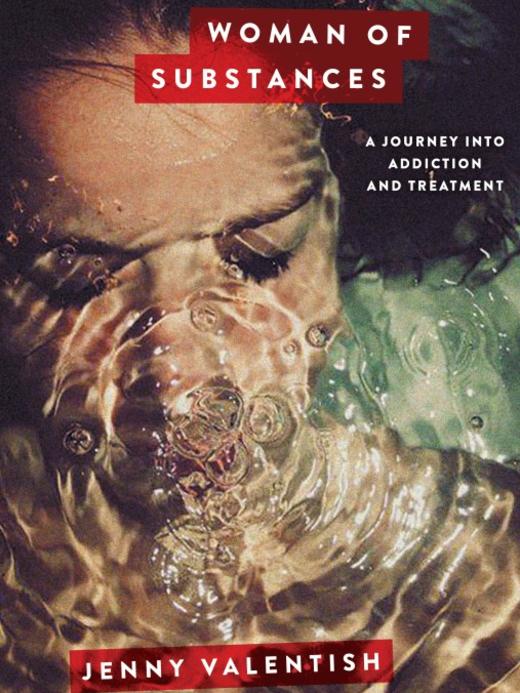Sarah Chaney on self-harm; Jenny Valentish on addiction, treatment
Two authors offer orginal takes on the issues of self harm and addiction.

The traditional contemplative voice is male. Culturally we have internalised the tenor of countless men — Plato, Aristotle, Kant, Nietzsche and others — and with it the understanding that reason is masculine. In contrast, feminine voices — Virginia Woolf and Andrea Dworkin, for example — continue to be contextualised within the confines of their instability, appearance or sexuality. Ayn Rand, Simone de Beauvoir and Margaret Thatcher, some of the few female ideologues admired by men, felt it necessary to deride their femininity to attract respect. As Thatcher memorably said to her cabinet, “Gentlemen, shall we join the ladies?”
The impact of this bigotry and marginalisation extends to every level of the human experience, from birth practices to how history itself is defined. Even now, the philosophical female gaze rarely wavers from personal dysfunction.

But is this focus the result of an entrenched ghetto mentality or the assertion that the personal is political? British medical historian and “delicate cutter” Sarah Chaney has written Psyche on the Skin: A History of Self-Harm as a rebuttal against the psychiatric appropriation of self-harming as solely perverse. For more than a century, doctors have sought a universal definition so as to workshop effective treatment. But is non-suicidal self-injury impulsive or cognitive, primitive or degenerationist, perverse or celebratory?
“On the one hand,” Chaney writes, “the modern concept of self-harm usually describes the behaviour as a private, personal act related to individual inner turmoil; on the other, the trigger is embedded in a neurobiological model of conditioning, based on reflex responses. Where does one begin and the other end?”
NSSI, Chaney argues, cannot be understood outside its social and cultural context, and the idea of female self-injury as intrinsically hysterical or manipulative is misogynistic. “By examining the attribution of meaning to self-inflicted injury from a historical perspective, it becomes clear that self-mutilation emerged from a variety of contemporary concerns and frameworks for understanding human identity.’’ It’s an exquisitely original take, and one evinced by Chaney with an attractive intensity and wavering levels of confidence. Discursive, meticulously politically correct and, at times, metallic in tone, she attacks the shifting borders of psychiatry and its baleful gender bias.
This book explores castration of the ancients and “therapeutic” bloodletting, the uneasy relationship between masturbation and the masculine ideal, pious flagellation, masochism and the death impulse, and trauma and contagion in the internet era. Some of Chaney’s most engaging research centres on early Christian notions of the body, variously understood as “a spiritual obstacle, a temporary prison for an immortal soul” and a “necessity, to ensure that the spirit was appropriately nurtured over time, increasing its desire to become one with God in death”.
Certain early theologians understood the body as “an instrument on which his faith could be made physically visible”, going so far as to compare human skin with that of a tambourine and “suggesting that both might be ‘played’ in order to praise God”. Religious flagellants, too, “used the body as an instrument of penance and devotion, to expiate sin and to praise God”.
Chaney notes that the human body, the canvas of self-mutilation, is defined not only by value but by change, distinguishing it from the eternal spirit, a “genderless ideal”. The definition of gender, she argues, is a kind of fiction, and as mutable as that of any other human attribute: “[T]he body was poised on the edge of a transformation so enormous as to make all present notions of identity tied to sexual differences, and all social roles based upon marriage, procreation, and childbirth, seem as fragile as dust dancing in a sunbeam.”
Her suggestions and investigations into gender and NSSI are anything but frivolous. Formal diagnoses are impossible without a medical definition, and American insurance companies refuse to pay for medical treatment without them. However, as Chaney writes, “enshrining NSSI as a specific syndrome runs the risk of imposing one specific cultural model of ‘harm’ across entire populations”. In addition, there are too many variables. How does cosmetic branding fit in? Tattoos? Sadomasochism? Apotemnophilia? “Plastic Positives”? Performance art? And how is severing of a baby’s foreskin for religious reasons any different to severing the clitoris of a girl for political reasons? Is the piercing of an ear less pathological than the piercing of a brow, lip or the glans? To what extent does cultural sanction override pathology?
Ultimately, Chaney wants to divert some of the attention from individual responsibility to darker sculptural forces. Psychiatry, she writes,
has largely suggested narratives framed in clinical, biomedical or individual terms. Often, this ignores the things that happen to people or the environments they live in. Poverty, homelessness, abuse, racism, oppression ... become internalised as symptoms of either biomedical failing or internal conflict. This is not to say that psychiatry cannot be helpful in making sense of our narratives or that medical services may not serve a valuable purpose. But it can never be the only thing that shapes us.

British-born, Melbourne-based Jenny Valentish comes to all the same conclusions in Woman of Substances: A Journey into Addiction and Treatment. This book is part monograph, part memoir, part Ginsbergian howl of outrage at a culture in which gender bias is a tenet. It is a work of compellingly articulate anger. Like Chaney, Valentish presents her fractured psyche as ground zero and from there launches into a quest to contextualise her premarital promiscuity, psychosis and shapeshifting addictions (alcohol, drugs, sex, sweets, porn).
The rage. The f..king rage! It’s always there, inflating inside me, like the Hindenburg awaiting a match. I’ve no doubt that it was the fiery fuel of my benders for all those years, though I hid it well.
She researches mental health issues pertinent to women, including “self-soothing shame, self-medicating anxiety and depression, the link with eating disorders and self-harm, the propensity to be drawn to abusive situations, the stigma around dependent mothers, the physical issues that women in particular can develop, and the fact that the treatment industry is still geared towards the male experience”.
In her early quest for acceptance, Valentish pored over “the classic sexists — Bukowski, Roth, Amis, Mailer, Updike, Hemingway, Kerouac” and became a “ladette, the spare rib of the 1990s lad”. It was only later she learned of the dramatic spike in death rates from liver disease, hepatitis and other alcohol-related damage among women from Liverpool, Manchester and Glasgow, who came of age in the era of rave culture and acid house.
She dropped LSD, smoked crack, mixed amphetamines with her breakfast juice, took heroin, and was carried comatose from trains. Her impulsivity was both indirectly suicidal and sanctioned by the subculture she loved.
Valentish, again like Chaney, challenges the “disease” model of addiction. “In the US it’s necessary to have substance dependence classified as a ‘chronic relapsing brain disease’ to have treatment covered by private health insurance. For the same reason, obesity is classified as a disease. Additionally a disease is, in theory, treatable by drugs, which keeps the big pharmaceutical companies happy.’’
She goes on to explore the cause of the self-regulatory failures that lead to addiction, reporting that caregiver neglect results in self-regulation not being routed into the neural pathways. Emotional trauma also triggers epigenetic changes to sperm and egg cells, “increasing the likelihood of stress disorders in the next generation”.
One of Valentish’s most fascinating claims is that “rats who had experienced maternal separation went on to have significantly higher responses to stress and higher sensitivity to cocaine’’. For humans, “being sensitised to stress can lead to significant long-term neurophysiological adaptations, provoking intense anxiety, reactivity and hypervigilance, perhaps even triggering a range of psychiatric disorders’’. Self-soothing with drugs can produce a heightened sensitivity to their effects.
With glittering bitterness and candour, she writes of being sexually abused at age seven by an older boy. Her reaction is disturbing and predictable. She begins hissing abuse at her reflection, urinating on the carpet, raking her arms with coat-hangers. “I’d pummel the soft furnishings, threaten the walls, splinter pencils in my mouth. Among my harem of dolls there was one plastic-haired boy. One afternoon I punched him till his eyelids rattled. I obliterated his face with crayons, stabbed him with a kitchen knife, and left him for dead in a flowerbed.”
Like her addiction, her self-hatred continuously shapeshifted. She took pride in her chosen nicknames: “Jenny Slapper”, “Junkie Jen”, “Nicotina Staines”. Child sexual abuse, she learns, is “an almost drearily familiar tale to those working in the drug and alcohol field”. She thinks the governmental focus should change from drugs to addiction. She asks why the courts do not heavily penalise the sexual, physical and emotional abuse of children.
Woman of Substances and Psyche on the Skin pivot on gender bias, particularly in medicine. As Valentish writes, “[T]he experts on the DSM [Diagnostic and Statistical Manual of Mental Disorders] taskforce were mostly men who had codified their biased assumptions about what behaviours were healthy in a woman and what were not.’’ A feminist who still abuses drugs (“a decision I made about two years into total abstinence, and it’s about joyous bursts, rather than grinding self-medication”), Valentish never pauses to consider the impact of “joyous” First World drug abuse on women in the developing world. Similarly, she doesn’t consider the cost of drugs in our community: the deformed babies; the sexually, physically and emotionally abused children; the traumatised families. She prefers to focus on the softer issue of gender in recovery programs.
Despite such flubs, the personal significance of their subjects to Valentish and Chaney only strengthens their contribution. They violently kick against the pricks, asserting their authority with eloquence and vigour. Which is a good thing. The stronger the female voice in our culture, the stronger our endorsement of humanity. To understand ourselves as a species, we need not only the political ideal of concord but the philosophical parity that makes it possible.
Antonella Gambotto-Burke is the author of The Eclipse: A Memoir of Suicide and Mama: Love, Motherhood and Revolution.
Psyche on the Skin: A History of Self-Harm
By Sarah Chaney
Reaktion Books, 320pp, $49.99 (HB)
Woman of Substances: A Journey into Addiction and Treatment
By Jenny Valentish
Black Inc, 304pp, $32.99


